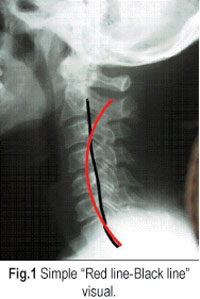I’ve already addressed some basics of building the corrective care practice in both the May (Depression Era Marketing), and July (Building the Family Practice) issues. Now, let’s touch on a super powerful internal marketing tool for building both patient retention and new patient referrals. Oh, and best of all, this one won’t cost a dime.
One of the most critical opportunities you’ll ever have to position yourself and your practice occurs during the report of findings. You’ll never have this opportunity again, yet many doctors walk in with absolutely no concise plan as to what they are going to say. I’ve visited lots of clinics and it’s not pretty. Inevitably, the report degenerates into some sort of vague rambling conversation with too much small talk, too many big words, and the doctor doing too much talking and not enough listening. No wonder patients don’t follow through with care or refer their friends.

In July’s article, I suggested focusing patient education/management around three basic areas: 1) plain talk without medical jargon, 2) establishing clear cut goals, and 3) empowering patients with choice and responsibility. Some of the most successful corrective care offices in the country are doing all that in a simple but powerful report of findings. An effective Report of Findings (ROF) emphasizes three key communication points supported with effective visualization: a) describe (show) the problem, b) explain treatment options, and c) establish THEIR goals for treatment. Here’s the generic version of my report. I’ll assume you have determined the patient is an appropriate candidate for postural rehab with reasonable chance for a successful outcome.


Step One: Describe the Problem
“Mrs. Jones- This picture is looking at your neck from the side, so you are facing to the left. Okay?” (Make sure they really understand.) “I drew a black line down the back of your neck bones so you could see more clearly how your neck is shaped. This black line is how you generally hold your neck when you’re upright. In other words, this X-ray is really just a picture of your posture. Understand?” (Get agreement again here.) “The red line represents approximately how you should be holding your neck. You can see here that your neck is too straight when it should have a lot more curve in it?” Is that clear?” (Wait for acknowledgment.) “I think this straightening of your neck is the underlying cause of your problems.”
Step Two: Explain Treatment Options
“Now that we know what is wrong, there are basically two ways we can treat this. The first thing we need to do is get you feeling better. Everyone’s a little different, but that generally takes two to four weeks. I’ll probably need to treat you two or three times weekly until you feel better. I call these first few weeks of treatment “Relief Care” because that’s what it’s about…just trying to help you feel better.”
“Once you feel better, there are two ways we can handle things. You can either: a) discontinue care and just check back whenever your pain returns, or b) you can follow through to help me actually rehab your spine back into better shape. I call this “Corrective Care.” If you choose corrective care, most of the rehab can actually be done by you, at home. However, you should know that it generally involves a couple of extra weeks of care in the office while we teach you how to do the necessary home care plus occasional follow ups so we can monitor your progress and make any needed changes to your program. Does that make sense? Any questions?” (Handle any questions.)
Step Three: Establish Treatment Goals
“Mrs. Jones, I work for you. I’m happy to take care of you whether you choose relief only or relief plus correction. In other words, if you want me to just patch things up for now, I can do that. Or, once you are feeling better, if you want follow through to help me get this problem fixed, we can do that as well. You just need to tell me which way makes the most sense to you so I know exactly what to do for you. Then we can get started today with your care.”
Now, here’s the key. Once you’ve explained the problems and options for treatment, just step back and allow the patients to establish their own goals for treatment according to what feels best for them. Nothing turns patients off faster than trying to steer them toward corrective care. Patients will immediately (and generally correctly) interpret such attempts as self serving on the part of the doctor. On the other hand, granting patients the respect and autonomy to make their own health care choices goes a long way toward gaining their respect and trust. Many times, even the most adamant relief care patients are more open to corrective care concepts, once they feel better and trust you.
The whole report only takes about five minutes and the exact verbiage probably isn’t as important as just doing it the same way every time. Find a way that works for you and put it to memory. In today’s economy, effective patient communication and education are too important to leave to chance.
 Dr. Mark Payne is the president of Matlin Mfg., a manufacturer and distributor of postural rehab products since 1988. To request more information on postural chiropractic methods, call 1-334-448-1210 or link to www.MatlinMfg.com
Dr. Mark Payne is the president of Matlin Mfg., a manufacturer and distributor of postural rehab products since 1988. To request more information on postural chiropractic methods, call 1-334-448-1210 or link to www.MatlinMfg.com
